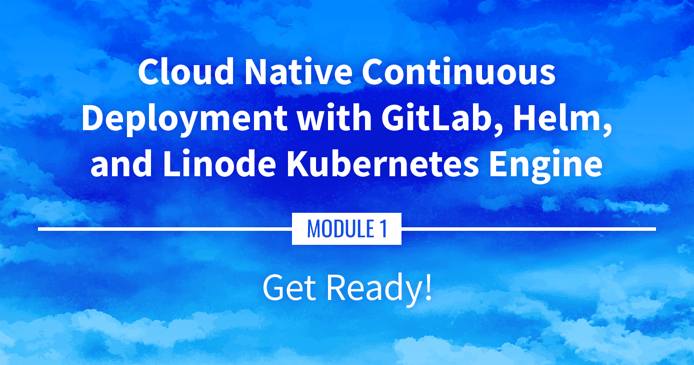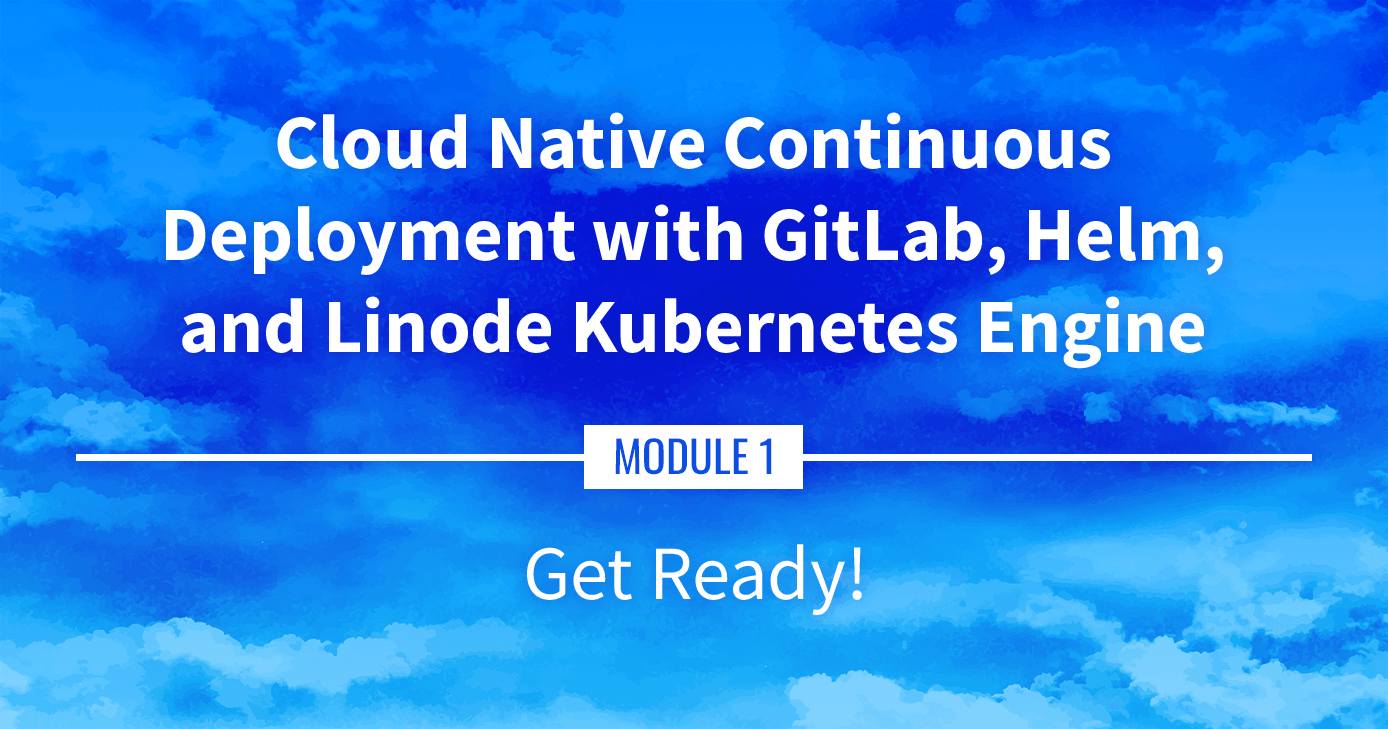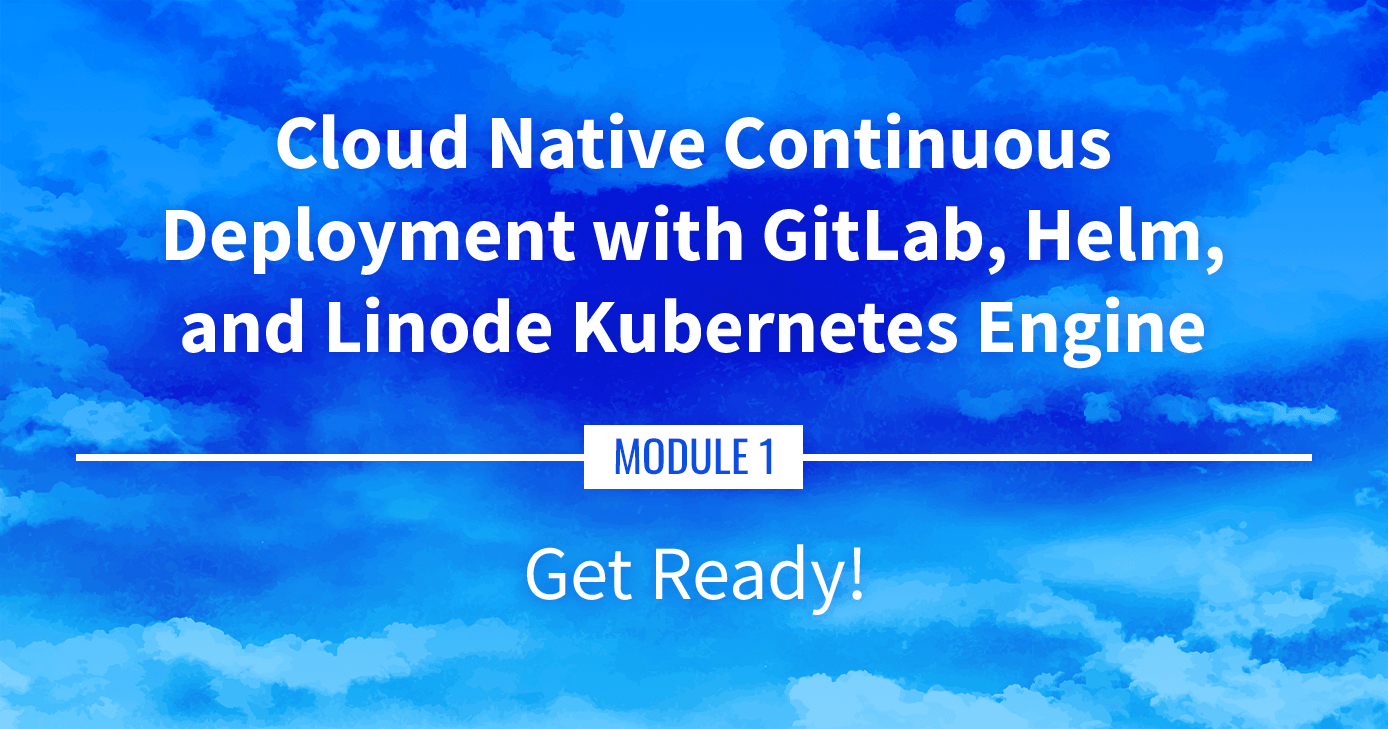Building a Continuous Deployment Pipeline Using LKE (Part 1): Get Ready
Updated
, by Linode
Create a Linode account
to try this guide with a $100 credit.
This credit will be applied to any valid services used during your first 60 days.


Slide deck: Cloud Native Continuous Deployment with GitLab, Helm, and Linode Kubernetes Engine: Get Ready (Slide #10)
Get Ready
The goal of this series is to set up a continuous deployment pipeline for a Kubernetes app on a Kubernetes cluster. This introduction will cover what to expect, the prerequisite knowledge, and the software/components that are required.
Navigate the Series
- Main guide: Building a Continuous Deployment Pipeline Using LKE
- Next section: Part 2: Sample Application
Presentation Text
Here’s a copy of the text contained within this section of the presentation. A link to the source file can be found within each slide of the presentation. Some formatting may have been changed.
Get ready!
- We’re going to set up a whole Continuous Deployment pipeline
- … for Kubernetes apps
- … on a Kubernetes cluster
- Ingredients: cert-manager, GitLab, Helm, Linode DNS, LKE, Traefik
Philosophy
- “Do one thing, do it well”
- … But a CD pipeline is a complex system with interconnected parts!
- GitLab is no exception to that rule
- Let’s have a look at its components!
GitLab components
- GitLab dependencies listed in the GitLab official Helm chart
- External dependencies:
cert-manager,grafana,minio,nginx-ingress,postgresql,prometheus,redis,registry,shared-secrets(these dependencies correspond to external charts not created by GitLab) - Internal dependencies:
geo-logcursor,gitaly,gitlab-exporter,gitlab-grafana,gitlab-pages,gitlab-shell,kas,mailroom,migrations,operator,praefect,sidekiq,task-runner,webservice(these dependencies correspond to sub-charts embedded in the GitLab chart)
Philosophy
- Use the GitLab chart to deploy everything that is specific to GitLab
- Deploy cluster-wide components separately (cert-manager, ExternalDNS, Ingress Controller…)
What we’re going to do
- Spin up an LKE cluster
- Run a simple test app
- Install a few extras (the cluster-wide components mentioned earlier)
- Set up GitLab
- Push an app with a CD pipeline to GitLab
What you need to know
- If you just want to follow along and watch…
- container basics (what’s an image, what’s a container…)
- Kubernetes basics (what are Deployments, Namespaces, Pods, Services)
- If you want to run this on your own Kubernetes cluster…
- intermediate Kubernetes concepts (annotations, Ingresses)
- Helm basic concepts (how to install/upgrade releases; how to set “values”)
- basic Kubernetes troubleshooting commands (view logs, events)
- There will be a lot of explanations and reminders along the way
What you need to have
If you want to run this on your own…
- A Linode account
- A domain name that you will point to Linode DNS (I got
cloudnative.partyfor $5) - Local tools to control your Kubernetes cluster:
- Patience, as many operations will require us to wait a few minutes!
Do I really need a Linode account?
- Can I use a local cluster, e.g. with Minikube? It will be very difficult to get valid TLS certs with a local cluster. Also, GitLab needs quite a bit of resources.
- Can I use another Kubernetes provider? You certainly can: Kubernetes is a standard platform! But you’ll have to adjust a few things. (I’ll try my best to tell you what as we go along.)
Why do I need a domain name?
- Because accessing
gitlab.cloudnative.partyis easier than 102.34.55.67 - Because we’ll need TLS certificates (and it’s very easy to obtain certs with Let’s Encrypt when we have a domain)
- We’ll illustrate automatic DNS configuration with ExternalDNS, too! (Kubernetes will automatically create DNS entries in our domain)
Nice-to-haves
Here are a few tools that I like…
- linode-cli to manage Linode resources from the command line
- stern to comfortably view logs of Kubernetes pods
- k9s to manage Kubernetes resources with that retro BBS look and feel 😎
- kube-ps1 to keep track of which Kubernetes cluster and namespace we’re working on
- kubectx to easily switch between clusters, contexts, and namespaces
Warning
- We’re going to spin up cloud resources
- Remember to shut them down when you’re down!
- In the immortal words of Cloud Economist Corey Quinn: You’re charged for what you forget to turn off.
This page was originally published on






